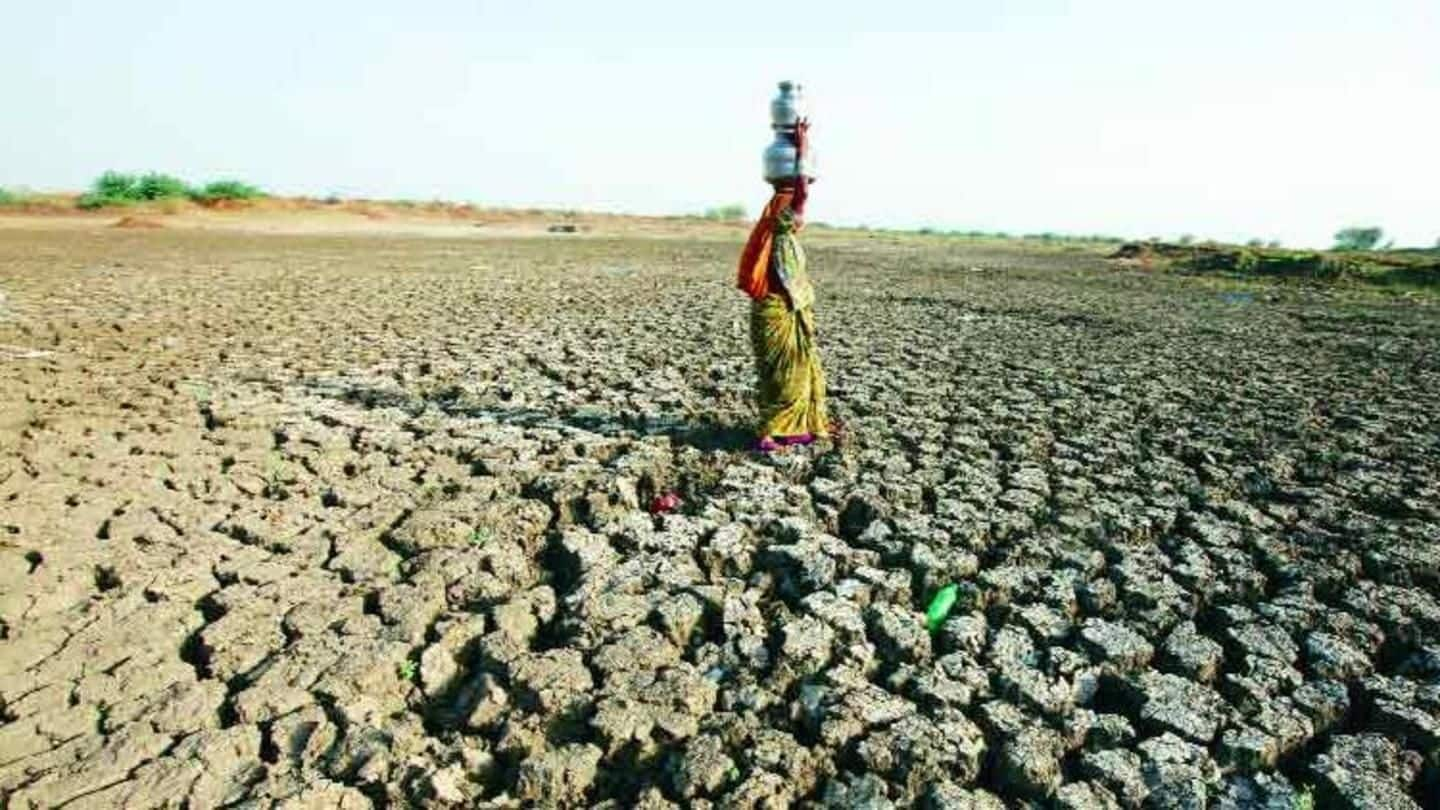
#WaterCrisis: 21 Indian cities to exhaust groundwater supplies by 2020
What's the story
Humans have always been more prone to curative action rather than preventive action, and that's the exact situation with the water crisis India now finds itself confronted with. With 21 Indian cities poised to run out of groundwater by 2020, it's upon India - both the government, and citizens - to take urgent action to try and avert a crisis of a gargantuan nature.
India's water
70% of freshwater in India is contaminated
India holds 4% of the global freshwater supply, and is home to 16% of the world's population. As it stands, with 70% of that water contaminated, India ranks 120th among 122 countries in a global water quality index. Coupled with increasing pollution, rapid groundwater depletion, declines in average rainfall, and increases in number of dry days during monsoon, the future doesn't look bright.
Current situation
600 million Indians under extreme water stress, 200,000 die annually
India's impending water crisis should be common knowledge by now, but what normally escapes public perception is the magnitude of the crisis, as is always the case when people are in denial. In India, 600 million people face high-to-extreme water stress, and about 200,000 people die annually owing to an inadequate supply of safe drinking water. And, it's about to get much, much worse.
CWMI predictions
By 2030, 40% of India's population won't have drinking water
Earlier this month, the NITI Aayog released its Composite Water Management Index (CWMI) report - India's first integrated national data set for water. The CWMI, which ranks states' performance in terms of water management, predicted that 21 Indian cities, specifically major ones, would run out of groundwater by 2020, and by 2030, a massive 40% of India's population won't have access to drinking water.
Food security
It doesn't look good for India's food security
Water is a state subject, and as far as states' performances are concerned, the results seem to be poor. During 2015-16, 14 out of 24 states analyzed scored below 50% on water management. Performances of most states improved marginally in 2016-17. Notably, if current trends continue, India's food security might take a major hit, with low performing states contributing 20-30% to India's agricultural output.
Why?
India is also looking at a 6% decline in GDP
It's also estimated that, if current trends continue, India would see a 6% decline in GDP by 2050, adding to the impeding water scarcity-driven socio-political crisis looming large in the air. But, even now, India's not completely beyond hope, and urgent measures coupled with strict, infallible ground level implementation can, at least to some extent, mitigate the adverse effects of the impending water crisis.
Actionable areas
What India can, and cannot do about the impending crisis
While not much can be done about climate change-induced factors like changing rainfall patterns in the short-term, there remain other areas for improvement, groundwater use being an important one. India, currently, uses more groundwater than the US and China combined, and thus, strictly regulating ground water exploitation in both industry and agriculture will be crucial in deciding whether India can avert the impending crisis.
Agriculture
India can reduce water wastage in agriculture by half
Agriculture, which accounts for 80% of India's water use, is a key area for improvement. Notably, farming practices exploiting groundwater stem from a lack of irrigation facilities. India has the potential to bring almost half of its total net cultivated area of 140 million hectares under micro-irrigation, which can reduce water use by half. So far, however, only 7.73 million hectares is under micro-irrigation.
Details
Other steps to improve groundwater augmentation and conservation
State-level performance on groundwater augmentation can be significantly improved by strengthening of groundwater regulations and ensuring strict ground-level policy implementation. For instance, steps like improving the extant groundwater monitoring system, round-the-clock monitoring of groundwater levels and quality, strict implementation of rainwater harvesting, and continuous operation and maintenance of the same can help. Additionally, comparable international models of sustainable water use can be referred to.
Looking ahead
Political will for reforms is crucial to averting the crisis
While experts believe that the NITI Aayog's CWMI is a right step towards data-driven water usage governance, there remains potential for improvement in the state's approach. Perhaps most importantly, it's encouraging to see NITI Aayog acknowledge the need for "urgent and improved" management of water resources. But, whether this concern percolates to policy making and strict ground-level implementation remains to be seen.